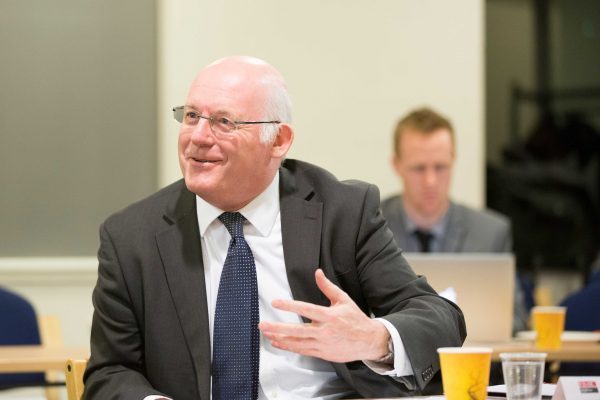 Since April 2015, the Care Quality Commission (CQC) – the regulator for health and social care in England – has been carrying out a transformed approach of monitoring and inspecting dental practices across the country. Writing for Dentistry magazine, John Milne, the CQC’s senior national dental adviser, explains more.
Since April 2015, the Care Quality Commission (CQC) – the regulator for health and social care in England – has been carrying out a transformed approach of monitoring and inspecting dental practices across the country. Writing for Dentistry magazine, John Milne, the CQC’s senior national dental adviser, explains more.
When the Care Quality Commission (CQC) first began regulating dentists way back in 2011, it’s not an exaggeration to say that we were not welcomed into dentistry with open arms. Our initial process of inspecting all dental practices in England found very few problems; the methodology of the inspection process was criticised by many, including dentists themselves, as not entirely appropriate, and the British Dental Association made an unsuccessful representation to the Minister of Health to remove dentistry from the area that the CQC regulates.
But that was then.
Transformation
 In 2013, a consultation – A fresh start of the regulation and inspection of primary care dental services – set out a revised operating model for the monitoring, inspection and regulation of dental services, which generated a high degree of engagement with the dental profession and its representatives. A dental reference group was established to help inform the design of this work and the CQC’s new approach has been carried out since April 2015.
In 2013, a consultation – A fresh start of the regulation and inspection of primary care dental services – set out a revised operating model for the monitoring, inspection and regulation of dental services, which generated a high degree of engagement with the dental profession and its representatives. A dental reference group was established to help inform the design of this work and the CQC’s new approach has been carried out since April 2015.
There are around 10,300 dental practices now registered with the CQC, and through our new approach, we monitor the quality of all of these as well as inspecting 10% each year. Our inspection teams, including specialist advisers, are trained and equipped to support a more consistent and robust way of gathering evidence by looking at five key questions – whether dental practices are providing services that are safe, caring, effective, responsive to people’s needs and well-led.
We have also published a specific set of prompts called Key Lines of Enquiry (KLOE) that our inspection teams use to guide them on inspection visits to help them be consistent when making their judgements about the quality of dental practices. For the people who are in charge of running these services, this enables them to reflect on how they operate and help deliver appropriate care for people who deserve nothing less.
Good news
As the CQC’s senior national dental adviser, I have been invited to speak to dentists and their staff in many areas of the country. I’ve outlined the principles of our new regulatory approach and those present have welcomed the fact that our inspection team includes dental professionals.
They have also welcomed that our approach is grounded in common sense and is not a ‘box ticking’ exercise. I have often used the example that we expect to see practices delivering a quality of care that we would be happy for anyone we love or care for to attend (the Mum test), as well as considering whether the care that person receives is likely to help them improve their oral health.
We’ve now completed the evaluation of the results of the first year under our new approach, and as highlighted in our 2015/16 State of Care report, it’s good to see that the vast majority (90%) of 1,023 dental practices we visited are providing safe and high quality care that people deserve to experience.
Improvement
 Dental practices have told us that even where no breaches were found, inspectors’ feedback has been helpful and encourages them to improve – and in those 10% of cases where there were breaches – these included a relatively small number of concerns about governance and safe care and treatment, such as:
Dental practices have told us that even where no breaches were found, inspectors’ feedback has been helpful and encourages them to improve – and in those 10% of cases where there were breaches – these included a relatively small number of concerns about governance and safe care and treatment, such as:
- Completion of appropriate risk assessments
- Infection control
- Medical emergencies
- Safeguarding
- Managing complaints and concerns
- Recruitment and supervision
- Support and staff training.
Where we have found problems, dental care records were often incomplete or did not have current information. Some practices did not complete audit cycles or take action to deal with identified risks. Importantly however, where we found regulatory breaches and carried out follow-up inspections, all but one practice made the necessary improvements.
Engagement
It’s valuable at this point to acknowledge that the dental reference group continues to meet, helping the CQC to refine the regulatory process and keep it relevant. The work of this group has also helped to produce and publish a series of ‘Mythbusters’, which are available to help everyone know just what is expected from dental practices. I recommend that Dentistry magazine readers have a look at these, they are really useful, and practices are telling us that they do help them make improvements.
Making a difference
Having worked as a national adviser at CQC for over 18 months now, I am clear that the CQC makes a huge effort to be responsive and effective. This culture is embedded in the leadership and the staff and we share the aim – together with the profession – of encouraging services to improve.
I have been personally encouraged that so many colleagues within the dentistry sector have responded positively that we do make a difference and that we are respected and valued as a regulator.


